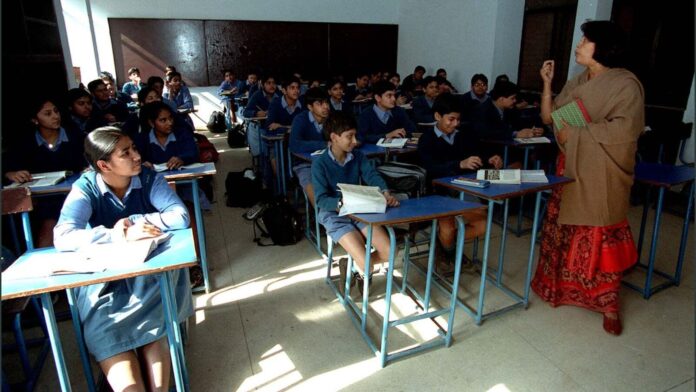Within those first years, we learned the three ‘R’s: reading, writing and (a)rithmetic, and soon, learning became second nature. A thriving career for anyone today is a cumulative milestone, all because we ‘learnt to read’ in early grades so that we could ‘read to learn’ in our later academic journey.
Reforms work in a similar way. They take time to bear fruit. Yet, early signs of progress can emerge, nourished by shifts in systems and mindsets, that bear the promise of propelling the reform journey forward.
One such reform is the National Education Policy (NEP) 2020, which positioned foundational literacy and numeracy (FLN) as the cornerstone of the entire education system.
This policy paved the way for the NIPUN Bharat Mission, a nationwide initiative to ensure that all Grade 3 students achieve FLN skills by 2027. This mission has catalysed action across states, driving them to adopt four cardinal principles of systemic change.
The first principle is to align the system with a clear, common goal. This began with a baseline assessment based on desired learning standards and the National Achievement Survey conducted by the central government in November 2021 immediately after the launch of the NIPUN Bharat Mission in July that year. It indicated an all-around fall in learning levels due to the pandemic and brought home the urgency of achieving FLN goals.
Early birds such as the government of Madhya Pradesh evaluated student learning outcomes in 2022 and set NIPUN targets based on the findings.
Strong leadership can further cement this process. Former chief minister of Madhya Pradesh, Shivraj Singh Chouhan, himself led a state-wide initiative on FLN called Mission Ankur.
Similarly, Uttar Pradesh chief minister Adityanath launched Mission Prerna and championed NIPUN Uttar Pradesh. Both leaders prioritized improved FLN outcomes as a goal that energized the entire system, from ministers to mentors to district and block-level teams.
The second principle is to augment classroom teaching and learning practices through structured pedagogy, scaffolded lesson plans, effective teaching-learning materials (TLMs), use of technology and continuous professional development of teachers.
Many states have begun to use teacher guides. With variegated and suggestive lesson plans, these guides are transforming classroom teaching to make it much more engaging.
Enhancing the effectiveness of TLMs requires strong teacher capabilities, so training cascades assume an important role. Empowering master trainers with comprehensive resources, trainer packages and expertise to directly train teachers is a way to minimize transmission losses seen in multi-layered cascades.
In Telangana, this model led to a remarkable 67% improvement in teaching effectiveness within one year. Assam, with its 146 TLMs in eight languages, has created a comprehensive FLN package that enables teaching students with diverse learning needs.
Technology can further help enhance capabilities. EdTech solutions can help achieve more in less time. They can streamline administrative tasks, free up valuable time and enable teachers achieve better learning outcomes for their students.
In Rajasthan, AI-enabled grading software reduced grading time from two hours to just 20 seconds. A pilot study by EdTech software Chimple for Satya Bharti Schools in Haryana showed that an app tailored to students’ abilities resulted in a 50% improvement in test scores while allowing teachers to track assignments and performance.
The third principle is to use low-stakes assessment to improve student learning outcomes. Teachers and middle management can use them to understand their students’ pedagogical strengths and weaknesses based on which teaching and training practices can be improved.
Uttar Pradesh uses the NIPUN Lakshya app to help 1,05,000 teachers assess students regularly, allowing them to improve their teaching methods. Simultaneously, the state can conduct large-scale assessments to review district performance and use these insights for interventions to achieve grade-appropriate student learning outcomes.
The final principle is to attract parents and communities to become an integral part of their child’s learning journey. Since children spend 80% of their time at home, strong parental involvement is seen to add about four extra months of learning each year.
Some parents who are first-generation learners may need more support for their child’s education. This can be addressed through bilingual communication with parents, holding parent workshops, home visits, peer support, etc. apart from using existing platforms like Gram Sabhas and parent-teacher meetings (PTMs).
Some districts of Bihar leverage Gram Sabhas to discuss FLN and provide parents with guidance on how they can support their child. This has led to a 10-15% increase in parent attendance at PTMs and a 5-10% boost in student attendance at schools.
States that are adhering to these principles are showing admirable progress. Madhya Pradesh has doubled the proportion of Grade 2 children who can read words and increased those able to perform single-digit subtraction to 65% this year from 18% in 2022. Uttar Pradesh has declared 24% of its schools as NIPUN, with 67% of students being proficient in grade-level competencies within five years.
Between the idea and the reality lie the shadow of time and systemic constraints. We have only six years left to meet the sustainable development goal (SDG) 4 aim of inclusive and equitable quality education for all.
As the world looks at India as the next driver of global growth, it is imperative to energize the system, augment processes, assess progress and invite parents and communities to join this journey.
Anita Karwal & Ashish Dhawan are, respectively, a former secretary, department of school education, Government of India; and founder, Central Square Foundation
#Focus #foundational #literacy #numeracy #improve #educational #outcomes
